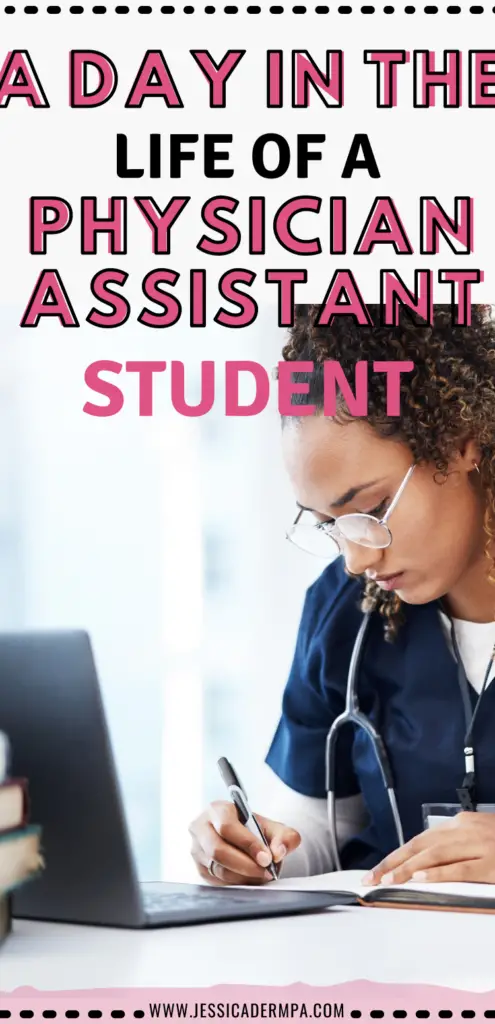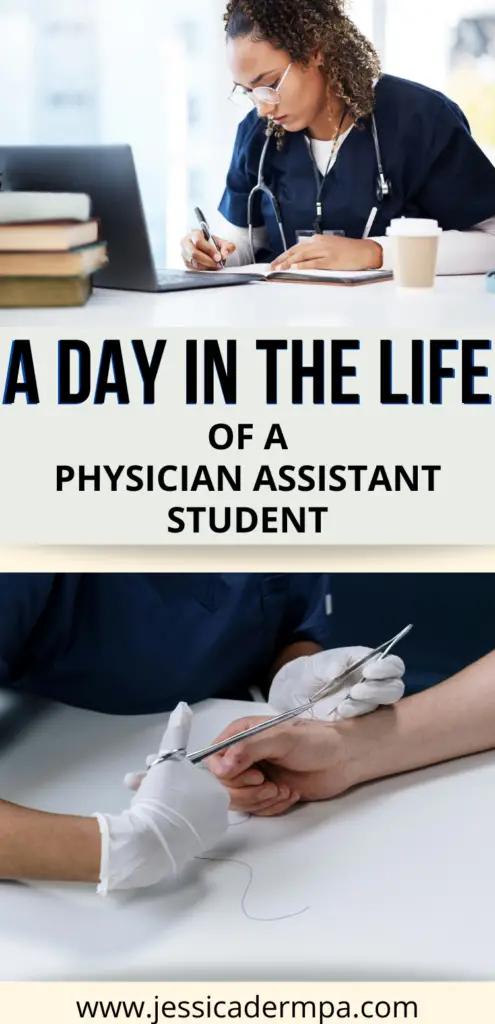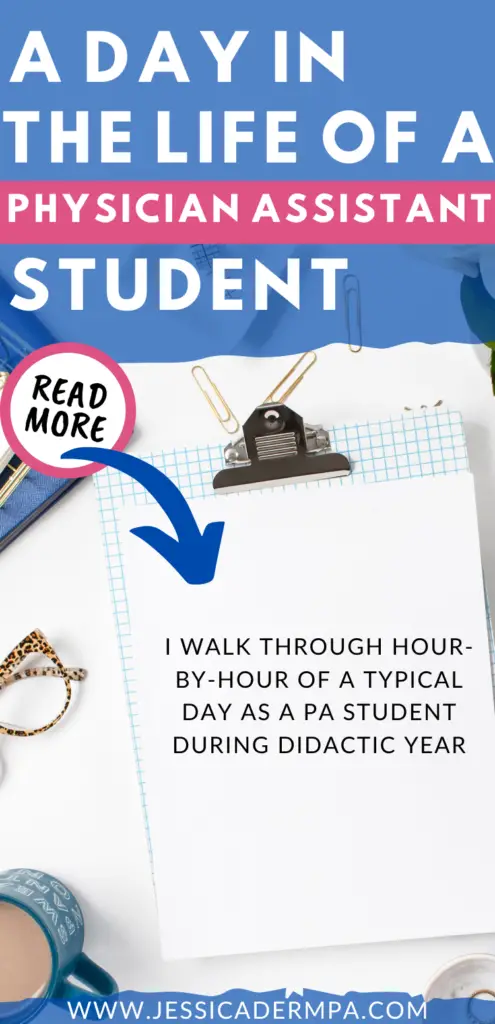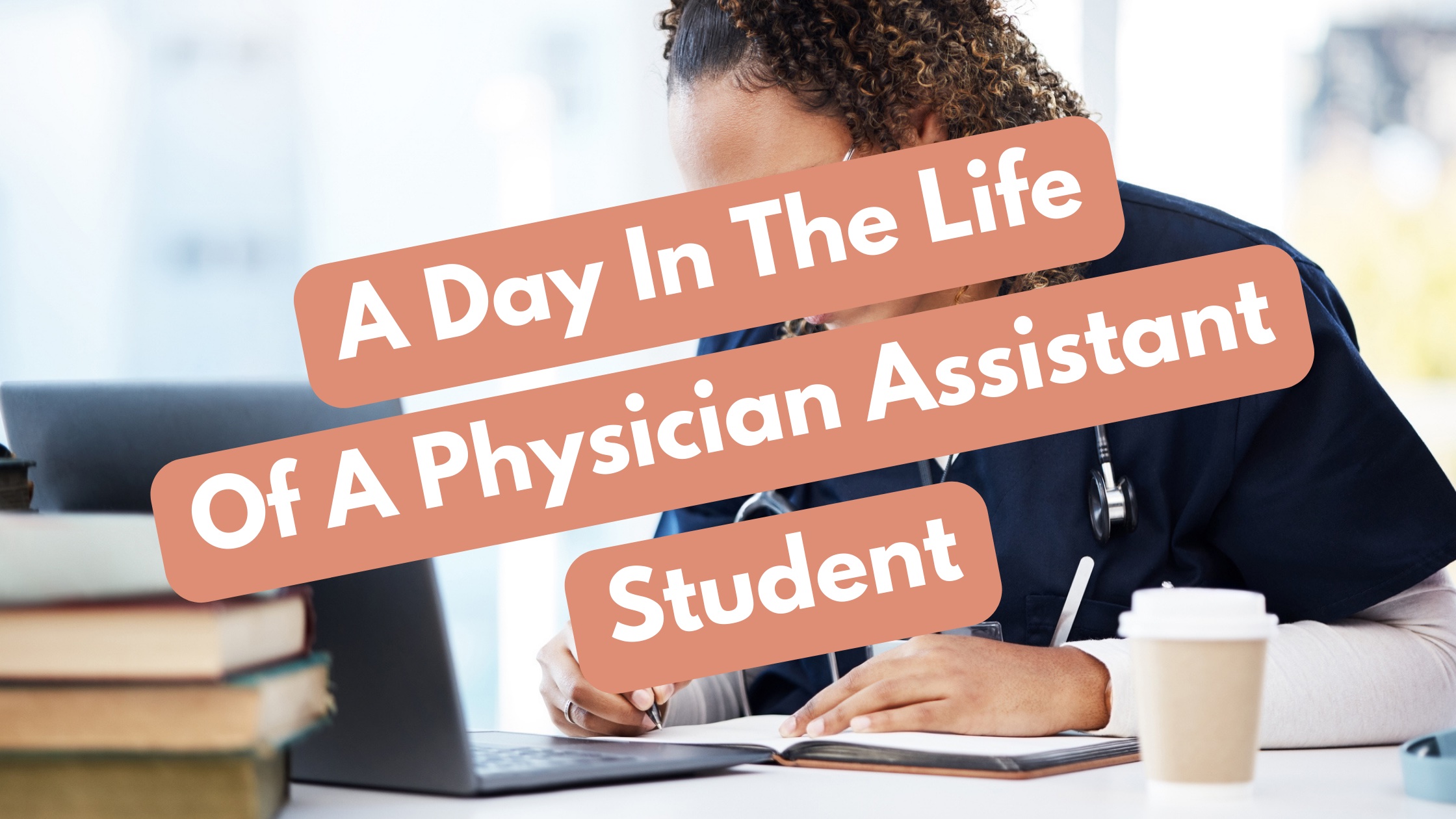It has been a few years since graduating from physician assistant school, almost 4 to be exact. I still remember my day to day of my didactic year and that of my many clinical rotations. I am not going to lie to you PA school is hard. It takes a lot of perseverance and mental toughness to get through the rigorous schedule. You have to go through it to come out on the other side prepared to take on the responsibility of being a medical provider. While every PA program has a slightly different schedule for exams and quizzes, they all maintain a baseline similarity regarding outline and curriculum. I will walk you through what a day in the life of a physician assistant student looks like during the didactic year.
Didactic year
My didactic year was exactly 12 months in length. Our program’s exams were held mostly on Mondays with quizzes scattered throughout the week. For my classmates and myself, this meant our weekends were consumed with studying. Our program director informed us that it was structured this way so we had enough time to study. This meant studying on the weekends when there were no classes. So yes that was a positive of having exams on Mondays, but the negative was you felt like you should be doing nothing BUT studying on the weekends. It was easy to get burnt out quickly. It felt like there was zero break from the constant cramming of material and knowledge into our brains.
I quickly learned that it was imperative to take care of my physical and mental health throughout the week. That way I had enough stamina on the weekends to study for the exams at the beginning of each week. This is what my normal day looked like during the didactic year as a physician assistant student broken down by the hour.
7:00 AM
Depending on the day I would either sleep in until the last minute or wake up super early (think 4:00 AM). I would only wake up that early on exam days to get any extra last-minute studying in. Fortunately, I lived only 10 minutes away from school. I would eat a quick breakfast, change into my business casual clothes, and then drive to school.
8:00-10:00 AM: Clinical skills
Clinical skills involved exactly what you think it would… clinical skills. In this class, I learned how to properly perform specialized exams on patients and use tools such as a stethoscope, otoscope, etc. The class involved both lecture and lab components. We had daily quizzes that tested knowledge from our reading from the night before.
There was a lot of emphasis on how to properly take a history and perform physical examinations. You also learn how to document patient care, which is vital in actual practice. The course also covered effective interviewing and communication skills, standardized patient and manikin simulation activities.
10:00-12:00 PM: pharmacology & pharmacotherapy
Pharmacology included lectures and lab experiences to learn a foundation in microbiology and the pharmacokinetics, pharmacodynamics, and therapeutic use of pharmaceuticals both acute and chronic conditions of all ages. The class was organized by body/organ systems and overlapped with clinical medicine in this way so you were learning diagnoses and the associated pharmacology in tandem. I found this class involved a lot of memorization.
12:00-1:00 PM: lunch
Since I lived so close to school I normally opted to go home during lunch, if only to take a moment for myself. If there was a quiz directly after lunch then I would stay at school to spend that time studying.
1:00-3:00 PM: clinical medicine
Clinical medicine is the class you learn the most about the different medical conditions, their etiology, epidemiology, how to diagnose, what tests to order, differential diagnoses, treatments, as well as evidence-based prevention. You learn about emergent, acute, subacute, and choric conditions across different ages and populations. The class was organized by different organ systems. For example: GI, pulmonary, cardiology, etc.
3:00-5:00 PM: medical physiology
Medical physiology was by far the toughest class at least for me. It provided an in-depth study of genetics, molecular mechanisms of disease, physiology, and pathophysiology, and applications to patient care. There were a lot of science-based concepts to learn in this class.
5:00-7:00 PM: downtime
I usually took this time to work out at the gym, shower, eat dinner, and relax. Relaxation time normally involved calling my then-boyfriend, now husband, or my parents. Sometimes I would watch a TV show, but I made sure to minimize the amount of time on electronics before diving into the textbooks.
7:00-11:00 PM: homework and studying
This time was reserved for any necessary homework for the following day and of course, studying for the next exams or quizzes.
After that, it is rinse and repeat! Every semester as a physician assistant student is slightly different but this is a general idea of what to expect during your didactic year of PA school! If you have any specific questions about the schedule comment them below!
Related posts:
6 Things to Expect When You Start PA School
3 Steps to Take If You Want to Graduate With Honors From PA School
5 Things You Should Do During Your PA School Clinical Rotations
This Book Will Help You Build Better Study Habits in PA School






View comments
+ Leave a comment